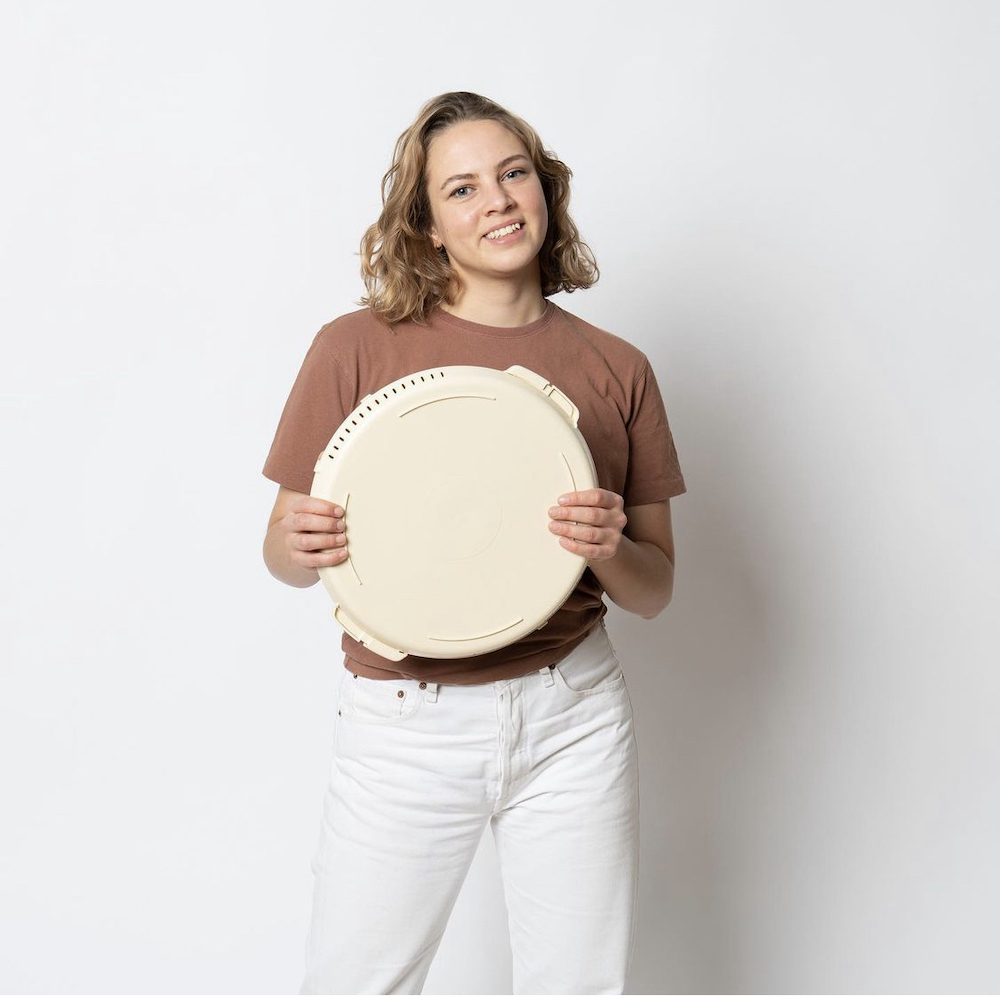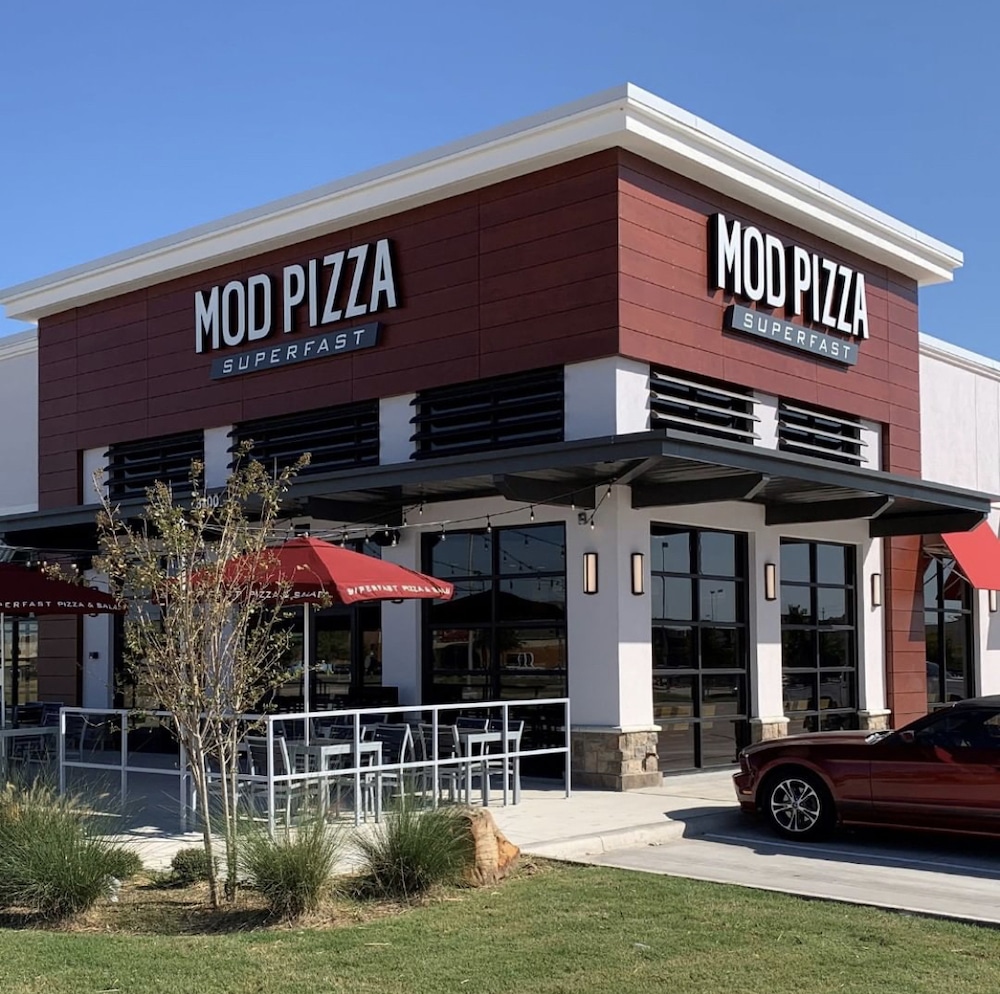- In a step toward more sustainable food packaging, German inventors Marlene Bruch and Luise Hornbach have designed a reusable and recyclable pizza box called PIZZycle.
- Stackable, dishwasher-safe and made with 100% recyclable material, PIZZycle boxes can be used and reused hundreds of times and offered as part of a deposit system.
Related: 4 ways to create a pizza box that rocks!
No one knows for sure who invented the pizza box—Frank Mastro, the New York visionary who almost certainly invented the modern gas-fired pizza oven, seems to be the most likely candidate. But it has been reinvented several times in recent years and with good reason. For starters, it’s a square or rectangular box designed to hold mostly round pizzas. It also tends to trap moisture, which can lead to a soggy crust by the time the pie reaches the customer.
But for Marlene Bruch and Luise Hornbach, the German inventors of PIZZycle, the real problem with the pizza box was an environmental one. Many, if not most, recycling centers won’t accept boxes with grease stains, and at the height of the pandemic, the boxes were creating a major litter problem in their country. They don’t fit well into trash bins and often ended up as litter in parks, sidewalks and streets.

Bruch and Hornbach were college students at the time, and they set out to solve the problem. The result was PIZZycle, a stackable and reusable pizza box that can be easily carried, cleaned in a dishwasher and used again and again. Made of highly durable, scratch- and heat-resistant, 100% recyclable material, PIZZycle—which can hold any pizza under 13 inches—is designed to reduce waste and combat a problem that has only worsened as demand for delivery and carryout has soared in the pandemic.
PMQ swapped emails with Bruch about the origins of PIZZycle, its business model and what makes their box unique. Here’s what she said:
PMQ: On your website, you mention that PIZZycyle was “born as a uni project.” Can you tell us a little more about that project?
Bruch: During the beginning of the Corona pandemic, Luise and I were studying design at the University of Art and Design in Offenbach, Germany. The challenge was to create a solution for a problem that has emerged with the new worldwide situation. We decided to look into the outcomes of restaurant closings and what effects this had on takeaway waste. We discovered that pizza boxes make up 22% of German takeaway waste and that they cannot be recycled! This led us to design a reusable pizza box.

Related: How Mici Italian’s co-founder invented his own pizza press
PMQ: We know of at least one other reusable pizza box produced here in the U.S. What makes Pizzycle revolutionary?
Bruch: When we started the design process, we did not identify other solutions. In retrospect, I think this was our biggest advantage. As designers, we learned that good design has to emerge from geometrical requirements and respect the needs of consumers. Therefore, without any other possible product in mind, we came up with our solution.
PIZZycle consists of two identical plates, which allows the user to nest and stack the box. This way, pizza restaurants are finally able to adapt to a reusable pizza box without having to worry about limitations in storage. Additionally, the identical plates and the innovative lock mechanism enables the user to easily carry and open a reusable box with 13 inches in diameter. I personally believe this is a real revolution in sustainable packaging industry.
Of course, we provide opportunities for branding on the boxes starting from a smaller order. Pizzerias can choose their own colors and have their logo on PIZZycle. Everything, starting from the mold to the branding, is made in Germany.

PMQ: If a pizzeria starts offering PIZZycle, what is the process for both the customer and the pizzeria? In other words, once a customer takes their pizza home in a PIZZycle box, what happens from that point?
Bruch: There are several possible systems: Firstly, a restaurant can rent out PIZZycles in return for a deposit. Usually, people will return the boxes with their next order and will get the deposit back.
Secondly, a restaurant can become part of a deposit system, which operates mostly nationwide and rents out the boxes to plenty of different restaurants for free. They organize a certain deposit and often operate apps, etc. This way, customers would not leave a deposit in cash but use their phones to scan a QR code on the boxes. The restaurants will usually be charged per usage.
Thirdly, a restaurant can sell PIZZycles to their customers, who can bring their box each time they get pizza and get a certain discount [as part of a loyalty program].
The goal is to create a sustainable alternative that is cheaper than cardboard boxes. PIZZycle can be used several hundred times as it’s dishwasher-safe, heat-resistant and extremely durable. This way, PIZZycle as a one-time investment will be cheaper than a common cardboard box after being used 10-15 times already.
PMQ: Do you guys currently have any pizzeria clients in Germany?
Bruch: Yes, we are establishing partnerships here in Germany and all over Europe at the moment. Several pizzerias already use PIZZycles and have given us great feedback. We’re always keen to share our progress of who we’re working with on our website and social media platforms.
PMQ: Do you have a plan yet to introduce PIZZycle in the U.S.?
Bruch: At the moment, we are focusing on the European market since the deposit scheme is very well known over here, as many countries use deposit bottles. We would love to enter the U.S. market. If you are a distributor and would like to work with us on making this vision a reality, please feel free to reach out!















